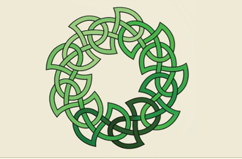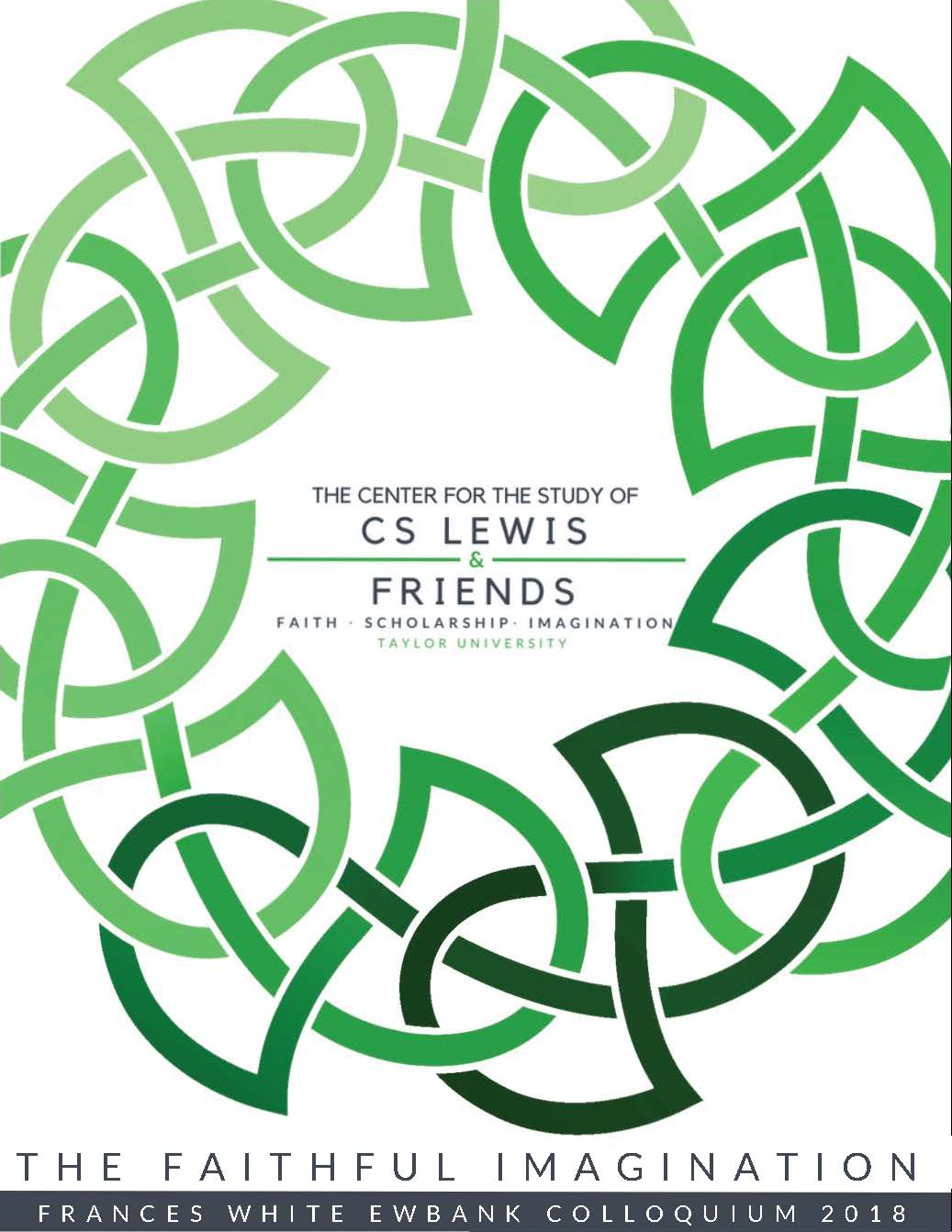Event Title
Concurrent Paper Session 3B: Mythopoeic Meaning
Location
Euler 130
Start Date
1-6-2018 10:45 AM
Description
"Baptism of the Imagination" - Harvey Solganick
C. S. Lewis read George MacDonald’s Phantases and claimed that it “baptized his imagination.” In addition, Lewis interacted with Owen Barfield and the Inklings, concerning the role of the imagination in Anthroposophy, and applied William Blake’s Romantic Imagination as well as MacDonald’s guidance in his work, The Great Divorce. Lewis studied medieval creation myths, including Norse and Celtic myths, but his inquiry into the mythopoetic, mystical imagination led him to a revelation of Christianity as the true myth, especially inspired by J. R. R. Tolkien and Hugo Dyson. Lewis, drawn by a theistic desire for the truth, apprehended that the imagination is a step toward faith in other worlds, other kingdoms, and ultimately toward the kingdom of Heaven. The imagination produces images, symbols, metaphors, and embodies itself in pictures from concrete reality, an incarnation of spirit. However, Christianity for Lewis is not just a matter of imagination, but of reasonable faith. His inquiry into theosophy, mysticism, and pantheism was part of his search to synthesize the rational mind with the revelatory imagination. Lewis was headed toward a rational, harmonious belief in God, culminating in an experience of personal revelation, that Christianity was the myth made real and that Christ was true God.
"Sehnsucht for a God who is Further Back and Higher Up" - Torri Frye
"Rings, Charms, and Horcruxes: An Exploration of Souls and Sacrificial Love in Harry Potter and The Lord of the Rings" - Emily Austin
The intertwined concepts of love and soul run centrally through J. K. Rowling’s Harry Potter septology. To Rowling, souls function as spiritual and moral centers, and a healthy soul depends symbiotically upon love shared with others. The Fidelius Charm, which gathers information inside a soul to protect others, creates a picture of interdependence and sacrificial love. Horcruxes—dark objects created by splitting one’s soul through an act of murder—epitomize the opposite, demonstrating a complete rejection of shared humanity. Lord Voldemort in particular illustrates a soul’s destruction. This oppositional relationship parallels the Rings of Power described in Tolkien’s The Lord of the Rings. Both the One Ring and Horcruxes represent domination and isolation from others. Voldemort’s divided soul echoes the Ring’s effect on Gollum—his split personality. The three Elvish rings, in contrast, embody a desire to preserve and protect akin to the Fidelius Charm. The Elves’ choice to destroy the One Ring rather than keep their own Rings’ power is one of many sacrificial-love images Tolkien offers. Through these approximate pairs of opposing images, this paper explores the nature of love, sacrifice, and humanity presented by Rowling and Tolkien.
"The African Influence on Tolkien's Legendarium" - Michael Wodzak
Tolkien’s pantheon, if that term is not too indelicate, of Valars invites obvious parallels with any number of Indo-European mythologies, not only in their roles, god of the ocean, god of the sky, god of the dead, but also in their history; the “War in Heaven” or the “War at the Beginning of Time” is a common theme found throughout the Indo-European diaspora from the Vedas to Mesopotamian myths through to the perhaps more familiar stories of clashes between gods and titans or Asgardians and frost giants. It is rarely suggested that Tolkien’s early childhood in South Africa influenced his Legendarium; he left so early and, by his own testimony, had only vague recollections of that time. And yet, there does appear to be at least one positive African influence on his work. This talk will be an exploration of that influence and the possible source from which it came.
Event Type
Paper
Concurrent Paper Session 3B: Mythopoeic Meaning
Euler 130
"Baptism of the Imagination" - Harvey Solganick
C. S. Lewis read George MacDonald’s Phantases and claimed that it “baptized his imagination.” In addition, Lewis interacted with Owen Barfield and the Inklings, concerning the role of the imagination in Anthroposophy, and applied William Blake’s Romantic Imagination as well as MacDonald’s guidance in his work, The Great Divorce. Lewis studied medieval creation myths, including Norse and Celtic myths, but his inquiry into the mythopoetic, mystical imagination led him to a revelation of Christianity as the true myth, especially inspired by J. R. R. Tolkien and Hugo Dyson. Lewis, drawn by a theistic desire for the truth, apprehended that the imagination is a step toward faith in other worlds, other kingdoms, and ultimately toward the kingdom of Heaven. The imagination produces images, symbols, metaphors, and embodies itself in pictures from concrete reality, an incarnation of spirit. However, Christianity for Lewis is not just a matter of imagination, but of reasonable faith. His inquiry into theosophy, mysticism, and pantheism was part of his search to synthesize the rational mind with the revelatory imagination. Lewis was headed toward a rational, harmonious belief in God, culminating in an experience of personal revelation, that Christianity was the myth made real and that Christ was true God.
"Sehnsucht for a God who is Further Back and Higher Up" - Torri Frye
"Rings, Charms, and Horcruxes: An Exploration of Souls and Sacrificial Love in Harry Potter and The Lord of the Rings" - Emily Austin
The intertwined concepts of love and soul run centrally through J. K. Rowling’s Harry Potter septology. To Rowling, souls function as spiritual and moral centers, and a healthy soul depends symbiotically upon love shared with others. The Fidelius Charm, which gathers information inside a soul to protect others, creates a picture of interdependence and sacrificial love. Horcruxes—dark objects created by splitting one’s soul through an act of murder—epitomize the opposite, demonstrating a complete rejection of shared humanity. Lord Voldemort in particular illustrates a soul’s destruction. This oppositional relationship parallels the Rings of Power described in Tolkien’s The Lord of the Rings. Both the One Ring and Horcruxes represent domination and isolation from others. Voldemort’s divided soul echoes the Ring’s effect on Gollum—his split personality. The three Elvish rings, in contrast, embody a desire to preserve and protect akin to the Fidelius Charm. The Elves’ choice to destroy the One Ring rather than keep their own Rings’ power is one of many sacrificial-love images Tolkien offers. Through these approximate pairs of opposing images, this paper explores the nature of love, sacrifice, and humanity presented by Rowling and Tolkien.
"The African Influence on Tolkien's Legendarium" - Michael Wodzak
Tolkien’s pantheon, if that term is not too indelicate, of Valars invites obvious parallels with any number of Indo-European mythologies, not only in their roles, god of the ocean, god of the sky, god of the dead, but also in their history; the “War in Heaven” or the “War at the Beginning of Time” is a common theme found throughout the Indo-European diaspora from the Vedas to Mesopotamian myths through to the perhaps more familiar stories of clashes between gods and titans or Asgardians and frost giants. It is rarely suggested that Tolkien’s early childhood in South Africa influenced his Legendarium; he left so early and, by his own testimony, had only vague recollections of that time. And yet, there does appear to be at least one positive African influence on his work. This talk will be an exploration of that influence and the possible source from which it came.


